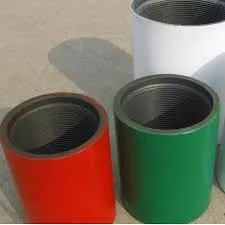- Afrikaans
- Albanian
- Amharic
- Arabic
- Armenian
- Azerbaijani
- Basque
- Belarusian
- Bengali
- Bosnian
- Bulgarian
- Catalan
- Cebuano
- Corsican
- Croatian
- Czech
- Danish
- Dutch
- English
- Esperanto
- Estonian
- Finnish
- French
- Frisian
- Galician
- Georgian
- German
- Greek
- Gujarati
- Haitian Creole
- hausa
- hawaiian
- Hebrew
- Hindi
- Miao
- Hungarian
- Icelandic
- igbo
- Indonesian
- irish
- Italian
- Japanese
- Javanese
- Kannada
- kazakh
- Khmer
- Rwandese
- Korean
- Kurdish
- Kyrgyz
- Lao
- Latin
- Latvian
- Lithuanian
- Luxembourgish
- Macedonian
- Malgashi
- Malay
- Malayalam
- Maltese
- Maori
- Marathi
- Mongolian
- Myanmar
- Nepali
- Norwegian
- Norwegian
- Occitan
- Pashto
- Persian
- Polish
- Portuguese
- Punjabi
- Romanian
- Russian
- Samoan
- Scottish Gaelic
- Serbian
- Sesotho
- Shona
- Sindhi
- Sinhala
- Slovak
- Slovenian
- Somali
- Spanish
- Sundanese
- Swahili
- Swedish
- Tagalog
- Tajik
- Tamil
- Tatar
- Telugu
- Thai
- Turkish
- Turkmen
- Ukrainian
- Urdu
- Uighur
- Uzbek
- Vietnamese
- Welsh
- Bantu
- Yiddish
- Yoruba
- Zulu
what are the differences between casing and tubing?
Understanding the Differences Between Casing and Tubing in Oil and Gas Operations
The oil and gas industry is a complex field that relies heavily on a variety of equipment to extract resources efficiently and safely. Among the critical components of oil and gas wells are casing and tubing, two types of pipe systems that serve distinct purposes throughout the drilling and production processes. While the terms are often used interchangeably by those outside of the industry, they are fundamentally different in terms of their function, design, and application. This article aims to clarify these differences and underline their significance in oil and gas operations.
Casing The Protective Shell
Casing is a series of large-diameter pipes that are installed in the well after drilling has taken place. The primary function of casing is to provide structural integrity to the wellbore, preventing it from collapsing. Casing serves multiple purposes
1. Well Integrity Casing helps maintain the stability of the wellbore. As drilling progresses, the geological formations encountered may vary in composition and stability. Casing provides a robust barrier against the earth's pressure and prevents the well from caving in.
2. Pressure Management After drilling, casing supports the application of cement, which is pumped into the annular space between the casing and the wellbore. This cement solidifies, providing additional support and sealing off any unwanted fluids from entering the wellbore, thereby protecting freshwater aquifers and preventing cross-flow between different geological formations.
3. Formation Isolation Casing allows for the isolation of different formations. By sealing off specific sections of the well, operators can target particular zones for production while preventing unwanted fluids from flowing into the wellbore.
Casing typically comes in various sizes and grades, depending on the depth of the well and the characteristics of the geological formations. Some common types of casing include surface casing, intermediate casing, and production casing, each serving specific roles during different phases of drilling and production.
Tubing The Conduit for Production
In contrast, tubing is smaller-diameter pipe that runs through the casing and is designed specifically for the transportation of oil and gas from the reservoir to the surface. Tubing has several key functions
what are the differences between casing and tubing?

1. Production Efficiency Tubing is the primary conduit through which oil and gas flow once they are extracted. It connects the wellbore to the surface facilities, allowing for the efficient production and processing of hydrocarbons.
2. Pressure Control Unlike casing, which is primarily about well integrity, tubing is designed to accommodate the dynamic pressure conditions in a producing well. Tubing must be able to withstand the varied pressures that occur during the extraction process, making its material and design critical.
3. Safety and Maintenance Tubing systems can be equipped with various safety devices, such as safety valves, which are crucial in preventing blowouts or uncontrolled flows. Additionally, tubing can be easily pulled from the well for maintenance or replacement, making the production process more versatile and manageable.
Key Differences In Summary
1. Function Casing provides structural integrity and isolation of formations, while tubing is designed specifically for oil and gas production transport.
2. Diameter and Design Casing is generally larger in diameter compared to tubing and is used to protect the wellbore. Tubing, being smaller, is optimized for the flow of hydrocarbons.
3. Installation Phase Casing is installed after drilling to stabilize the well, whereas tubing is put in place after the casing has been set and cemented.
4. Material and Strength Requirements Casing must endure high external pressures and geological forces, while tubing focuses more on managing internal pressures during extraction.
Conclusion
In the oil and gas industry, understanding the differences between casing and tubing is crucial for effective well design and management. Each plays a vital role in ensuring that operations are conducted safely, efficiently, and economically. By distinguishing these components, professionals in the field can optimally plan for drilling, production, and long-term well integrity, ultimately contributing to a more sustainable energy future.
-
Tubing Pup Joints: Essential Components for Oil and Gas OperationsNewsJul.10,2025
-
Pup Joints: Essential Components for Reliable Drilling OperationsNewsJul.10,2025
-
Pipe Couplings: Connecting Your World EfficientlyNewsJul.10,2025
-
Mastering Oilfield Operations with Quality Tubing and CasingNewsJul.10,2025
-
High-Quality Casing Couplings for Every NeedNewsJul.10,2025
-
Boost Your Drilling Efficiency with Premium Crossover Tools & Seating NipplesNewsJul.10,2025







